Nils Peters
Voice Anonymization for All -- Bias Evaluation of the Voice Privacy Challenge Baseline System
Nov 27, 2023Abstract:In an age of voice-enabled technology, voice anonymization offers a solution to protect people's privacy, provided these systems work equally well across subgroups. This study investigates bias in voice anonymization systems within the context of the Voice Privacy Challenge. We curate a novel benchmark dataset to assess performance disparities among speaker subgroups based on sex and dialect. We analyze the impact of three anonymization systems and attack models on speaker subgroup bias and reveal significant performance variations. Notably, subgroup bias intensifies with advanced attacker capabilities, emphasizing the challenge of achieving equal performance across all subgroups. Our study highlights the need for inclusive benchmark datasets and comprehensive evaluation strategies that address subgroup bias in voice anonymization.
Evaluation of the Speech Resynthesis Capabilities of the VoicePrivacy Challenge Baseline B1
Aug 22, 2023Abstract:Speaker anonymization systems continue to improve their ability to obfuscate the original speaker characteristics in a speech signal, but often create processing artifacts and unnatural sounding voices as a tradeoff. Many of those systems stem from the VoicePrivacy Challenge (VPC) Baseline B1, using a neural vocoder to synthesize speech from an F0, x-vectors and bottleneck features-based speech representation. Inspired by this, we investigate the reproduction capabilities of the aforementioned baseline, to assess how successful the shared methodology is in synthesizing human-like speech. We use four objective metrics to measure speech quality, waveform similarity, and F0 similarity. Our findings indicate that both the speech representation and the vocoder introduces artifacts, causing an unnatural perception. A MUSHRA-like listening test on 18 subjects corroborate our findings, motivating further research on the analysis and synthesis components of the VPC Baseline B1.
Deep Learning-based F0 Synthesis for Speaker Anonymization
Jun 29, 2023



Abstract:Voice conversion for speaker anonymization is an emerging concept for privacy protection. In a deep learning setting, this is achieved by extracting multiple features from speech, altering the speaker identity, and waveform synthesis. However, many existing systems do not modify fundamental frequency (F0) trajectories, which convey prosody information and can reveal speaker identity. Moreover, mismatch between F0 and other features can degrade speech quality and intelligibility. In this paper, we formally introduce a method that synthesizes F0 trajectories from other speech features and evaluate its reconstructional capabilities. Then we test our approach within a speaker anonymization framework, comparing it to a baseline and a state-of-the-art F0 modification that utilizes speaker information. The results show that our method improves both speaker anonymity, measured by the equal error rate, and utility, measured by the word error rate.
VoicePrivacy 2022 System Description: Speaker Anonymization with Feature-matched F0 Trajectories
Oct 31, 2022Abstract:We introduce a novel method to improve the performance of the VoicePrivacy Challenge 2022 baseline B1 variants. Among the known deficiencies of x-vector-based anonymization systems is the insufficient disentangling of the input features. In particular, the fundamental frequency (F0) trajectories, which are used for voice synthesis without any modifications. Especially in cross-gender conversion, this situation causes unnatural sounding voices, increases word error rates (WERs), and personal information leakage. Our submission overcomes this problem by synthesizing an F0 trajectory, which better harmonizes with the anonymized x-vector. We utilized a low-complexity deep neural network to estimate an appropriate F0 value per frame, using the linguistic content from the bottleneck features (BN) and the anonymized x-vector. Our approach results in a significantly improved anonymization system and increased naturalness of the synthesized voice. Consequently, our results suggest that F0 extraction is not required for voice anonymization.
On The Effect Of Coding Artifacts On Acoustic Scene Classification
Dec 09, 2021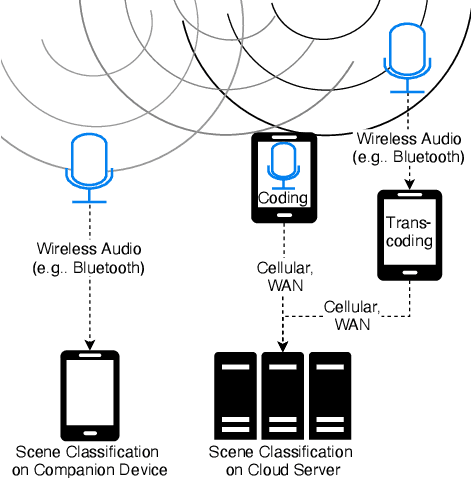
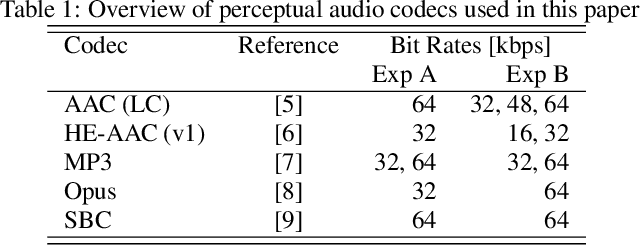
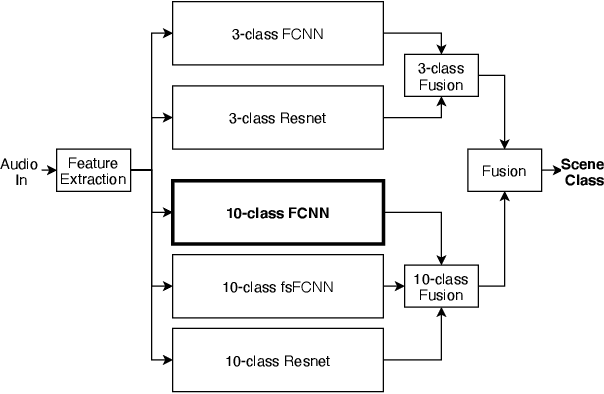
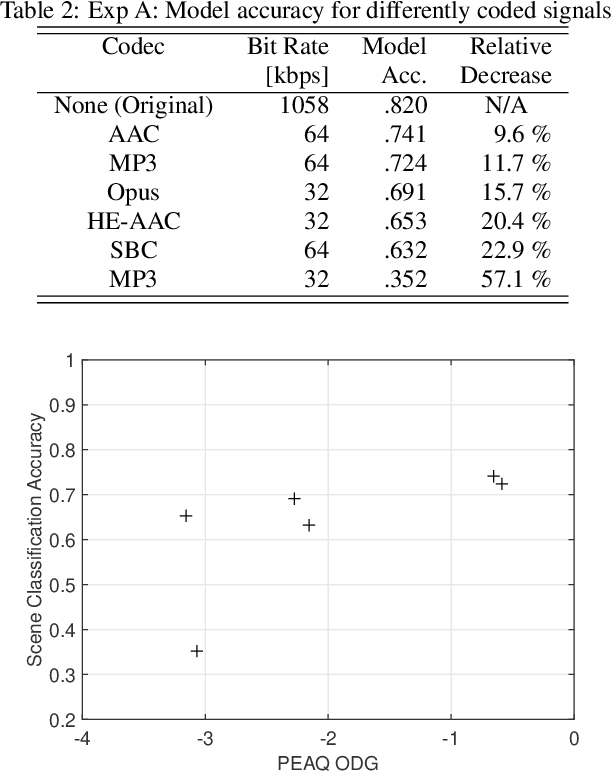
Abstract:Previous DCASE challenges contributed to an increase in the performance of acoustic scene classification systems. State-of-the-art classifiers demand significant processing capabilities and memory which is challenging for resource-constrained mobile or IoT edge devices. Thus, it is more likely to deploy these models on more powerful hardware and classify audio recordings previously uploaded (or streamed) from low-power edge devices. In such scenario, the edge device may apply perceptual audio coding to reduce the transmission data rate. This paper explores the effect of perceptual audio coding on the classification performance using a DCASE 2020 challenge contribution [1]. We found that classification accuracy can degrade by up to 57% compared to classifying original (uncompressed) audio. We further demonstrate how lossy audio compression techniques during model training can improve classification accuracy of compressed audio signals even for audio codecs and codec bitrates not included in the training process.
Storage and Authentication of Audio Footage for IoAuT Devices Using Distributed Ledger Technology
Oct 17, 2021



Abstract:Detection of fabricated or manipulated audio content to prevent, e.g., distribution of forgeries in digital media, is crucial, especially in political and reputational contexts. Better tools for protecting the integrity of media creation are desired. Within the paradigm of the Internet of Audio Things(IoAuT), we discuss the ability of the IoAuT network to verify the authenticity of original audio using distributed ledger technology. By storing audio recordings in combination with associated recording-specific metadata obtained by the IoAuT capturing device, this architecture enables secure distribution of original audio footage, authentication of unknown audio content, and referencing of original audio material in future derivative works. By developing a proof-of-concept system, the feasibility of the proposed architecture is evaluated and discussed.
Exploring the Importance of F0 Trajectories for Speaker Anonymization using X-vectors and Neural Waveform Models
Oct 13, 2021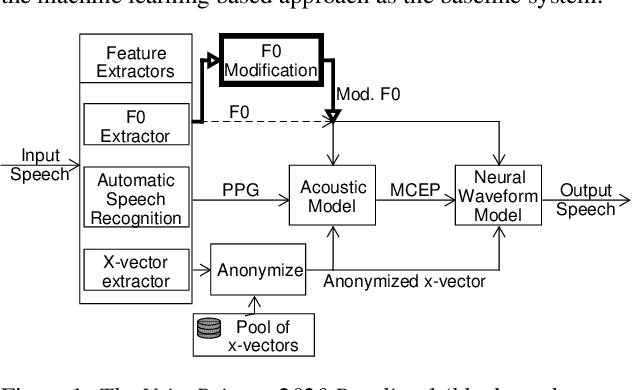
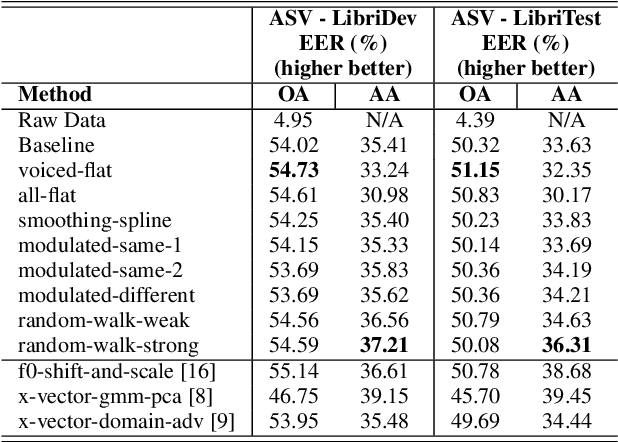
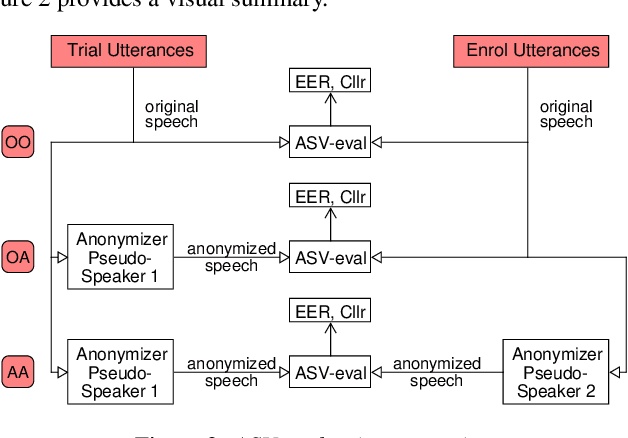
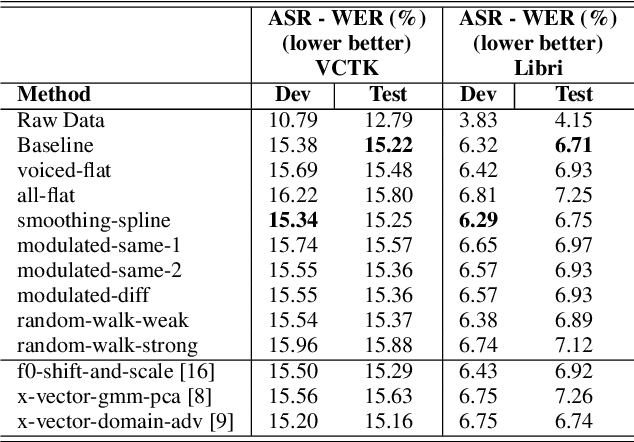
Abstract:Voice conversion for speaker anonymization is an emerging field in speech processing research. Many state-of-the-art approaches are based on the resynthesis of the phoneme posteriorgrams (PPG), the fundamental frequency (F0) of the input signal together with modified X-vectors. Our research focuses on the role of F0 for speaker anonymization, which is an understudied area. Utilizing the VoicePrivacy Challenge 2020 framework and its datasets we developed and evaluated eight low-complexity F0 modifications prior resynthesis. We found that modifying the F0 can improve speaker anonymization by as much as 8% with minor word-error rate degradation.
 Add to Chrome
Add to Chrome Add to Firefox
Add to Firefox Add to Edge
Add to Edge